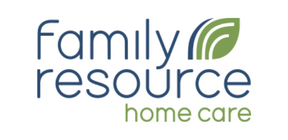It’s the new year and home care agencies are abuzz with outlooks for 2019. This is the time we tend to set our sights on all we wish to accomplish with our clean slate. One yearly ritual is the annual exercise that home care agencies perform in attempting to balance increases in costs and the goal of keeping home care affordable for clients. We face wage, tax, benefit, workers’ compensation, unemployment insurance, liability insurance, rent, utility, mileage, screening, and new mandated costs each year, such as Washington State’s paid FMLA. To help us gauge these impacts, the eyes of the industry turn to the Genworth Cost of Care Survey, which analyzes the various costs for long-term care providers, nationwide and regionally. Being a leader in long-term care insurance, Genworth has excellent data on the costs of care. This report anticipates that the various sectors of the long-term care industry, namely home care, adult day care, assisted living, and skilled nursing facilities, will all see a 3% increase in costs this year. These cost increases are due to a shortage of caregivers in a nearly full employment economy, changes to minimum wages, benefit increases, employer mandates, and general increases to cost of doing business.
Even though long-term care costs are rising, home care continues to lead in the flexibility of long-term care utilization. For example, the survey states that home care, on average, costs $4,004 per month across America, which is virtually the same as an assisted living facility. What that comparison does not immediately make apparent is that the average home care client is able to spend much less than the assumed 44 hours per week in care. Home care is catered to the unique needs of each client rather than being one-size-fits-all. For example, at Family Resource Home Care, the actual average of our client census is just under 27 hours per week which is 40% less than the figure that Genworth is using to compare the cost of long-term care options. Clearly, when comparing apples to apples, home care remains one of the least expensive options and certainly the most desirable. An AARP study shows that over 90% of Americans over the age of 65 wish to age in place at home. Home care is really the only option for long-term care that offers this solution. So, while costs do continue to rise each year due to so many factors, home care continues to lead as the most flexible and desirable option while being as cost-conscious as possible.
Even though the costs will continue to go up, the home care industry can be proud of what they effectively and efficiently accomplish for those who require care. That is what we do.
For a look at the Genworth Cost Report go here.
photo credit: wuestenigel Forecast 2019 text with US dollar banknotes via photopin (license)





